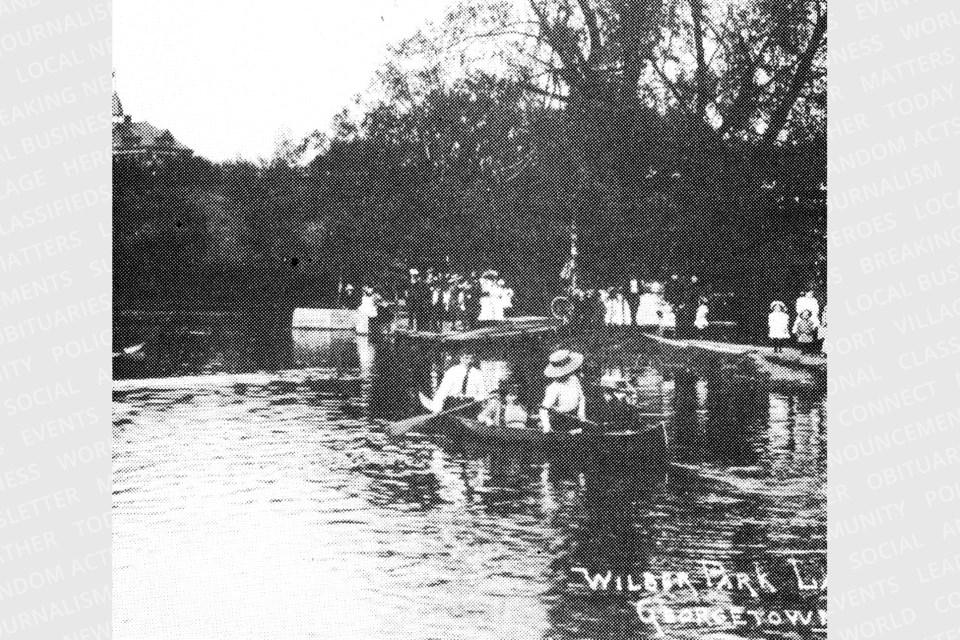Spending time by the lake is often the choice of recreation during the summer months for many Canadians, and the residents of Georgetown once enjoyed such a luxury very close to home - almost right at their doorstep.
When one thinks of canoeing, kayaking, or fishing in Georgetown, they often think of going to the Credit River that straddles the community’s border, when in fact, during the 19th and into the early 20th century, residents could just go downtown to enjoy some time at the “lake.”
Following the settlement of Georgetown in the 1820s, George Kennedy, the community’s namesake, took advantage of Silver Creek to set up a saw mill, along with other mills and factories, which saw the construction of dams to form a pond or lake in order to power these industrial sites.
Along with these ponds being designed to power equipment, they would often serve a dual purpose as a spot for recreation. Prior to travelling abroad for vacations, it was often a common practice to “stay-cation” and use a local pond or lake as a place to boat and picnic throughout the summer months.
During the community’s early years, there were once four major ponds within the incorporated village of Georgetown, with the two prominent ponds being Wilber Lake, at the corner of Guelph and Mill streets, and Lawson’s Trout Pond, at Main Street South and James Street. The latter, while easily accessible along Main, was more of a private pond, with the former being quite the opposite.
It was documented that Lawson’s Trout Pond, designed to power a flour mill by flume on Mill Street, was a fisherman’s paradise as it was abundant with trout, but the only problem was that fishing was by invitation only and not many residents had the chance to fish there.
Meanwhile, Wilber Lake was more of a public spot where village folk enjoyed many sunny afternoons canoeing on the “lake” and having picnics along its banks.
It is commonly believed that the pond received the name ‘Wilber’ by combining the two family names of Williams and Barber; both prominent in early local milling. It was also referred to by locals as ‘Lake Sometime’ as it would be there and sometimes not, all depending on if it were a wet or dry year.
While Wilber Lake saw much enjoyment as a place of recreation for a number of years, all good things came to an end as Wilber, along with Lawson’s Pond, were drained and filled with soil in 1915 to make way for the Toronto Suburban Railway; an electric railway line that operated from 1917 to 1931, connecting Toronto to Guelph with a stop in Georgetown.
Today, Silver Creek is merely a trickle compared to its earlier years and is now almost hidden by modern development that surrounds the area, with the local mill ponds, such as Wilber Lake and Lawson’s Trout Pond, being only a distant memory of a by-gone era that once played a key role in the industrial development of Georgetown.
Thankfully, the existence of these ponds continue to live on in history through written documentation and photos, reminding us of the time when you could paddle a canoe in downtown Georgetown.
Article written by Scott Brooks, with information from the Dills Collection/Halton Sketches/ EHS/ HHPL.



